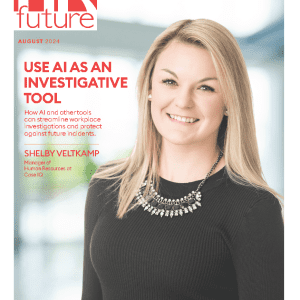During the hard-hitting phase of today’s pandemic, HR organizations were one of the most disrupted lines of business. Stay-at-home orders forced employees into home offices, liquidity shortages made furloughs and lay-offs necessary, and once ambitious hiring plans experienced painful cutbacks.
Now that the economy is entering the “new normal” characterized by a suppressed economy and the ever-looming threat of lockdowns snapping back, many professionals are re-evaluating their agendas. In the first deep-dive interview on “How to Create Resilience and Win in the Recovery,” SuccessFactors COO (MEE) Dr. Florian Dreifus laid out three clear priorities for HR during these challenging times:
- Ensure business continuity
The first wave of lockdowns caught many businesses off guard: How do you enable your workforce to work remotely from one day to another? How do you onboard new hires without meeting them? How are you supposed to sign contracts without being in the same room? The upshot of this shock therapy was that, for digitalized companies, the transition into home offices went reasonably well.
On the other hand, the weak spots in the tech stacks of many businesses have become painfully obvious: Dr. Dreifus cites the example of an HR department that saw its paper-based process of having managers sign bonus letters interrupted by the lockdown. The department was essentially forced to retrieve the letter from the house mail and resend it via external mail, leading to significant confusion and delay.
Investing in technology would not only help to avoid such awkward situations in the event of an eventual snap-back of lockdown measures. It would also prepare businesses to reap productivity benefits that will outlast the looming economic downturn.
Take remote work as an example: As Dr. Dreifus cites, many organizations will decide to keep working remotely on a larger scale even when the epidemic-related necessity has abated. According to ASUG, 40% of American SAP users plan to work from home at least sometimes, even after the crisis, while only 7% of the American workforce previously had the option to do so, according to the WEF. Clearly, remote work is here to stay. So, any investment in enabling remote work will not only safeguard your business continuity in a time of increased operational uncertainty, it will be the best preparation for the new way of working that arises from it.
- Listen and create trust
This is not only a period of heightened uncertainty for HR departments but also for employees. For many of them, it was a traumatic initial couple of weeks: Being sent home on a few days’ notice, having to work from the kitchen table with kids interrupting their Zoom calls, and not knowing whether their job would fall prey to an emergency headcount reduction soon. In a situation like this, Dr. Dreifus points out, it is important to reach out to employees and, even more importantly, make them heard inside the organization.
This is where the paradigmatic shift from human capital management (HCM) to human experience management (HXM) becomes most apparent: Instead of viewing and treating employees as assets at the disposal of the company, HR departments more and more focus on the feelings of the human beings in the business. The Qualtrics Remote Work Pulse, for example, helps managers and HR departments understand the emotional situations and needs of their co-workers as they are sitting at home working.
As noted above, physically separated working situations could become the norm rather than the exception. In addition, understanding and being able to respond to the needs of talent is increasingly becoming a competitive advantage in the labor market. Those businesses that are able to bridge the spatial distance to their employees will not only be more resilient in the upcoming time of uncertainty but will also have a leg up in the resurging war for talent once the economic engine fires up again.
- Establish transparency
The emotional and physical well-being of employees is an extremely valuable additional data point in times of spatially separated workplaces. But, as Dr. Dreifus emphasizes, the current phase of uncertainty and volatility exposes the value of data on a much more general level.
An SAP customer from the retail industry, for example, was faced with a sudden lack of skilled employees in shops as demand started spiking when the lockdowns went into effect. According to Dr. Dreifus, however, the company was not only able to identify employees in headquarters who had the necessary training and experience but also prioritized the best locations for deploying them from a cost/benefit perspective. This type of agility is only possible for companies that have the relevant data on their people, their operations, and their finances at hand and can carry out the necessary reactions in an integrated IT system.
This is the Insight-to-Action principle applied in a crisis situation. But again, this type of capability is also helpful in day-to-day business operations: the Insight-to-Action principle is not only helpful in a situation where substantial resources need to be diverted centrally. This capability can also prove useful in the more operational strata of an enterprise.
By having transparency into the state of the process, receiving proactive suggestions on how to improve it, and finally, being able to take action in the same environment, operational users are able to move the needle substantially. An investment in real-time analytics and an integrated IT landscape does not only pay off in times of upheaval but is perfect preparation for the recovery.
The recession ahead will continue to provide numerous challenges to HR departments and employees alike: New guidelines for sharing physical spaces, organizational realignments, adapting the skillset of the workforce to shifting market demands – the list seems endless. However, digitalizing core processes will not only make them disruption-proof, but also more efficient.
Developing a better understanding of employees’ needs will not only make it easier for them to work remotely, but also strengthen their ties to the company. And being able to act on data-based insights will not only help steer the ship, but will also help it move in a more versatile manner once it’s back in the open sea.
Victor Hoeck is the SAP solution advisor, and Shiraz Khota is Sales Director for Africa at SAP SuccessFactors.
Visit the SAP News Center. Follow SAP on Twitter at @SAPNews.




















